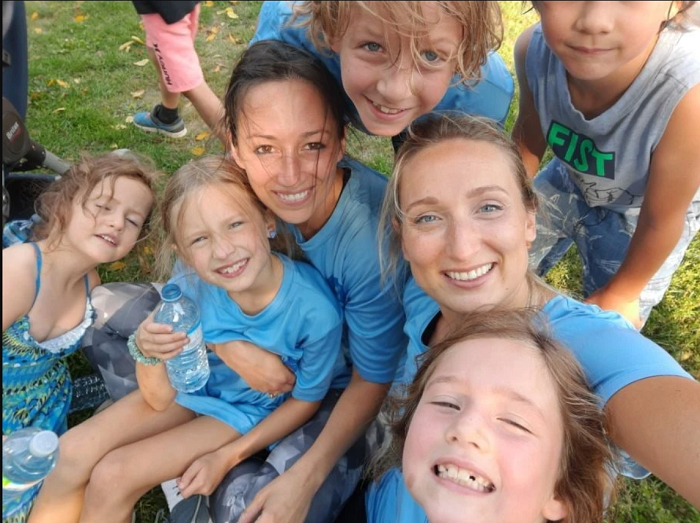If you are in distress, you can call or text 988 at any time. If it is an emergency, call 9-1-1 or go to your local emergency department.
- Case Studies, Professional Resources
Roots of Hope Case Studies – Spotlight on Hamilton, Ontario
THE HAMILTON COMMUNITY The City of Hamilton, at the west end of Lake Ontario between Niagara Falls and Toronto, is Canada’s ninth largest city, with a population of 767,000 (as of 2020). While the local economy has traditionally been led by steel and heavy manufacturing, it has shifted over the last decade toward the service sector and health sciences. Hamilton is rich in services. It is home to two major hospital systems: Hamilton Health Sciences (HHS) and St Joseph’s Healthcare Hamilton (SJHH). The HHS comprises six unique hospitals and a cancer centre. The SJHH, which includes Charlton, West 5th, and King Street locations, is the city’s leading provider of adult psychiatric and addiction services, including inpatient, outpatient, and community-based services. Hamilton also has a multitude of community agencies that support or provide services in child, youth, and adult mental health. McMaster University, Mohawk College, and Redeemer University train large numbers of health-care and community professionals in the city and surrounding areas. Based on demographic sizes and statistical factors, our Roots of Hope suicide prevention initiative identified men and transitional age youth as two priority populations to support. Higher suicide rates among men ages 50 to 59 and comparatively high levels of mental health problems and illnesses among youth and young adults (ages 20-29) led us to such a focus. Our program leads, the Suicide Prevention Community Council of Hamilton (SPCCH) and the Canadian Mental Health Association Hamilton (CMHA Hamilton), share a desire that we ground our work in a coordinated, evidence-informed community suicide prevention model. With that in mind, our aim has been to build on existing community expertise and align ourselves with best practices. COMMUNITY IMPACT Advances in service gatekeeper training during the pandemic have helped change the cultural environment for discussing suicide and facilitating help seeking. After completing the LivingWorks Start training, all of the participants either “strongly agreed” or “agreed” with the following statements: Other community training in MHFA, safeTALK, and ASIST have provided important opportunities to expand training networks and promote suicide prevention awareness. The community is benefiting from a targeted means-safety initiative that includes training and a comprehensive infographic with crisis and mental health supports. Community agency staff are able to share these resources and engage in healthy discussions with clients about creating safe environments. Important research priorities have been advanced including BIC and the Emotions Matter program. Our updated environmental scan also includes epidemiological and training data that helps our pillar project work. To help build consensus on projects to support youth mental health, our Building Bridges to Support Transitional Youth project has worked with youth organizations and service providers. This work is ongoing and will build upon youth engagement. In addition, CMHA Hamilton and SPCCH have advanced life promotion with a broad range of community educational sessions to provide community mental health support during the pandemic and beyond. For World Suicide Prevention Day, gatekeeper training sessions were provided, alongside a community engagement event —a butterfly release and remembrance ceremony — to foster community engagement and promote the core concept that suicide prevention is everyone’s responsibility.
- Case Studies, Professional Resources
Roots of Hope Case Studies – Spotlight on Hamilton, Ontario
Roots of Hope Case Studies – Spotlight on Hamilton, Ontario
- Suicide Prevention
THE HAMILTON COMMUNITY The City of Hamilton, at the west end of Lake Ontario between Niagara Falls and Toronto, is Canada’s ninth largest city, with a population of 767,000 (as of 2020). While the local economy has traditionally been led by steel and heavy manufacturing, it has shifted over the last decade toward the service sector and health sciences. Hamilton is rich in services. It is home to two major hospital systems: Hamilton Health Sciences (HHS) and St Joseph’s Healthcare Hamilton (SJHH). The HHS comprises six unique hospitals and a cancer centre. The SJHH, which includes Charlton, West 5th, and King Street locations, is the city’s leading provider of adult psychiatric and addiction services, including inpatient, outpatient, and community-based services. Hamilton also has a multitude of community agencies that support or provide services in child, youth, and adult mental health. McMaster University, Mohawk College, and Redeemer University train large numbers of health-care and community professionals in the city and surrounding areas. Based on demographic sizes and statistical factors, our Roots of Hope suicide prevention initiative identified men and transitional age youth as two priority populations to support. Higher suicide rates among men ages 50 to 59 and comparatively high levels of mental health problems and illnesses among youth and young adults (ages 20-29) led us to such a focus. Our program leads, the Suicide Prevention Community Council of Hamilton (SPCCH) and the Canadian Mental Health Association Hamilton (CMHA Hamilton), share a desire that we ground our work in a coordinated, evidence-informed community suicide prevention model. With that in mind, our aim has been to build on existing community expertise and align ourselves with best practices. COMMUNITY IMPACT Advances in service gatekeeper training during the pandemic have helped change the cultural environment for discussing suicide and facilitating help seeking. After completing the LivingWorks Start training, all of the participants either “strongly agreed” or “agreed” with the following statements: Other community training in MHFA, safeTALK, and ASIST have provided important opportunities to expand training networks and promote suicide prevention awareness. The community is benefiting from a targeted means-safety initiative that includes training and a comprehensive infographic with crisis and mental health supports. Community agency staff are able to share these resources and engage in healthy discussions with clients about creating safe environments. Important research priorities have been advanced including BIC and the Emotions Matter program. Our updated environmental scan also includes epidemiological and training data that helps our pillar project work. To help build consensus on projects to support youth mental health, our Building Bridges to Support Transitional Youth project has worked with youth organizations and service providers. This work is ongoing and will build upon youth engagement. In addition, CMHA Hamilton and SPCCH have advanced life promotion with a broad range of community educational sessions to provide community mental health support during the pandemic and beyond. For World Suicide Prevention Day, gatekeeper training sessions were provided, alongside a community engagement event —a butterfly release and remembrance ceremony — to foster community engagement and promote the core concept that suicide prevention is everyone’s responsibility.
SHARE THIS PAGE
RELATED

Review our Assessment Framework for Mental Health Apps — a national framework containing key standards for safe, quality, and effective mental health apps in Canada.

To help expand the use of e-mental health services, we developed four online learning modules based on our Toolkit for E-Mental Health Implementation, in collaboration with the Centre for Addiction and Mental Health (CAMH).

Stepped Care 2.0© (SC2.0) is a transformative model for organizing and delivering evidence-informed mental health and substance use services.

